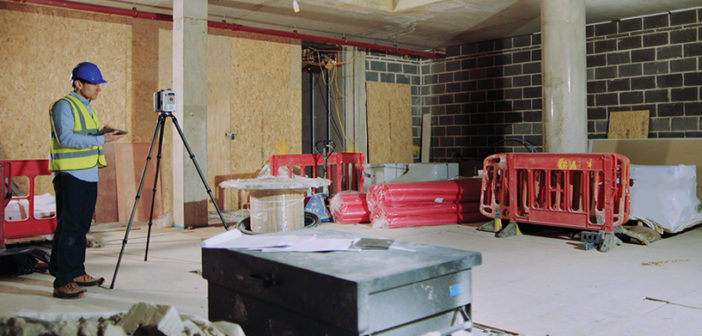In recent years, technology has influenced the way we design, manage and document the built environment. The introduction of sophisticated 3D modelling and BIM has opened the eyes of designers and constructors alike to the opportunities that technology can offer, improving productivity, increasing accuracy and reducing costs. The move from 2D to 3D has helped the industry to become more profitable, productive and better organised.
Efficient quality assurance with comparison to design-intent and BIM
3D Reality Capture Delivers Understanding
3D reality capture is the latest technology improving understanding and documentation of the built environment. Using ultra-accurate laser scanning combined with high-definition imagery, whole environments are captured quickly and in detail to create a digital 3D environment that can be explored, measured and annotated, for a fuller understanding of the building.
Smaller, more powerful and faster laser scanners and software can now be used by non-specialists to capture and record projects. For example, BIM Managers can quickly capture construction stages at the touch of a button, allowing comparison to design-intent for quality assurance. Mechanical and electrical consultants can also record the positioning of pipework and electrical systems prior to being clad to inform future maintenance and adaption.
Ensuring quality, accuracy and precision, 3D reality capture provides contractors and consultants with a new tool to improve productivity and workflow, while also reducing costly mistakes.
Enhanced productivity and workflow with automated software tools
Advantages of 3D Reality Capture
- Quickly create an accurate 3D model of your site
- Measure, view and annotate imagery and point cloud data
- Capture every detail for review on- or off-site
- Record as-built structures for quality assurance and client handover
- Improve productivity and workflows
- Easy-to-operate for non-specialist users
- Interactive and collaborative information
- Less manual work and trips to site required
- More accurate construction verification
- Complete project documentation, scanned and verified, at the touch of a button
Documenting Built Environments 
There are a number of ways that 3D reality capture can be used to document the built environment and improve construction and maintenance:
As-Built Documentation
Complete documentation of build attained quickly through automated registration of scans, simple notation and verification by automated software tools.
QA and BIM
Fast and precise digitisation of the as-built environment for quality control and comparison to BIM, ensuring quality and accuracy of build.
Record of Services
Record exact position of services prior to cladding to ensure compliance with design and to inform future maintenance or refurbishment.
Project Handover
Complete project documentation, either in stages throughout project for invoicing, or as a whole at completion ready for handover to client.
To learn more about 3D reality capture solutions, the new Leica RTC360 and how they can improve project documentation and quality assurance, contact Leica Geosystems at leica-geosystems.com















